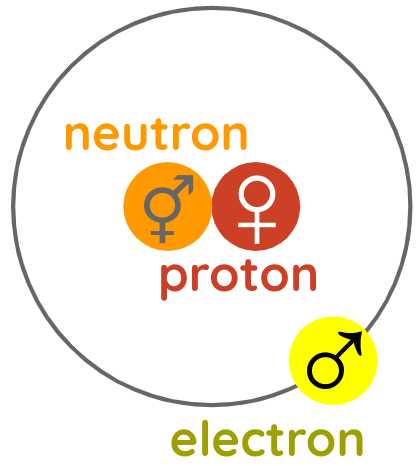Notating the MSQ Classification
Table of Contents
The most confusing thing about modern Physics is the messy classification of particles into Hadrons, Baryons, Mesons, Leptons, Fermions, and Bosons.
Bad Naming from the Ignorance of How Nature is Organized
The problem began when physicists started smashing atoms.
- Before this, particles were much simpler, as being electrons, neutrons or protons.
- Smashing atoms revealed subatomic particles which then had to be classified.
Modern Physics did not know the ancient Physics concept of the 5 Elements.
Instead, they only knew Electromagnetism as the supreme principle which was called:
- the Fire Element in the ancient Physics
- the 1st Element in Cartesian Physics
‘Spin’ is the most obvious property of Electromagnetism.
And so physicists ended up classifying subatomic particles:
- based on spin (as fermions, bosons, and leptons) or
- based on quarks (as hadrons, baryons, mesons)
These classify an even messier naming convention of particles:
- Greek-based such as Proton, Electron, Tau
- Person such as Fermion, Boson, Higgs
- Silly such as Quark, Gluon, Up, Down, Charm, Strange
Overhauling the Particles
We fix this to make their naming more intuitive and therefore easier to remember by basing it on the ancient system.
This system divides everything in the universe as either a quantum-substance or a medium.
- The medium is where force works through.
- The substance is the discrete identity that reacts to the force.
- The quantum is the smallest unit of substance.
The Graviton, Electromagnetic, Weak, and Strong Forces are replaced with Spacetime, Radiance, Convertible, and Material Layers respectively.
Each Layer has a representative quantum-substance and a representative medium.
For example:
- electrons represent the Radiant Element and is therefore renamed as “qor” or quantum of radiance
- light is the medium of Radiance and so photons are renamed into “mor” or medium of radiance
- neutrons represent the Convertible Element and becomes “qoc”
- the W and Z bosons become “moc1”
The same convention is applied to all the other Layers. In this way, people only need to know the 5 layer names.
Polarity ♀ ♂ ⚥ Instead of Electromagnetic Charges
Charges in Physics are denoted as positive + or negative -, from Benjamin Franklin.
We replace this with male and female polarity.
| Part | Name | Description |
|---|---|---|
| North Pole of a Magnet | Male pole ♂ |
Where virtual photons (striated particles) enter |
| South Pole of a Magnet | Female pole ♀ |
Where virtual photons exit |
| Cathode | Female Terminal | Entrance of electrons (positive in Physics) |
| Anode | Male Terminal | Exit of electrons (negative in Physics) |
| Electrons (Negative Charge in Physics) | Masculine ♂ |
Abundance of receivers |
| Holes (Positive Charge in Physics) | Feminine ♀ |
Lack of receivers |
| Cations | Feminine Atom | An atom that loses electrons |
| Anions | Masculine Atom | An atom that gains electrons |
| Proton | som ♀ |
|
| Electron | qor ♂ |
|
| Neutron | soc ⚥ |
Neutral charge is bisexual |

Antiparticles -
Antiparticles are a reverse rotation or counterspin.
This is denoted with a negative sign in the front since the male symbol already denotes negative charge. This is different from Physics which is in a superscript.
For example, beta decay is denoted as:
soc → som + qor + -qoc1
Here, the convertible substance transforms into:
- a material substance
- a radiant quantum
- an anti-convertible quantum
Overhauling The Chemical Elements
The future discovery of the aether will lead to the creation or discovery of many more chemical combinations. This would overwhelm the mind with so many new names.
This is why we simplify the naming of chemical elements by reducing superfluous data.*
Superphysics Note
We rename them into their atomic number representing their Version of Matter (to be discussed in the part on the Material Layer).
- Hydrogen is
1orv1 - Oxygen is
8orv8 - Water becomes
1(2)-8 - Table salt is
11-17
| Name | Chemistry | Superphysics |
|---|---|---|
| Hydrogen | H | 1 or “v1” |
| Water | H2O | 1(2)-8 or “1-duo-8” |